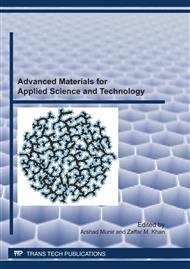p.97
p.110
p.121
p.127
p.131
p.139
p.144
p.151
p.157
Wear Behaviour of HVOF Sprayed WC-Cobalt Coatings
Abstract:
Tungsten carbide cobalt coating has been extensively used for cutting and mining tools, aerospace, automotive and other wear resistance applications. These coatings not only have superior mechanical properties like high hardness, toughness and compressive strength but have also excellent controllable tribological properties. In this paper a comparison of wear properties and structural phases has been presented to consider for tribological applications. It is found that nanocrystalline duplex coatings have shown much superior properties as compared to the microcrystalline coatings. Evidence of clusters of WC particles was found in microcrystalline coating as compared to homogeneous dense coating structure observed in the nanocrystalline coating. These results are discussed to assess their suitability for super hard wear resistance applications.
Info:
Periodical:
Pages:
144-150
Citation:
Online since:
September 2011
Authors:
Keywords:
Price:
Сopyright:
© 2011 Trans Tech Publications Ltd. All Rights Reserved
Share:
Citation:


